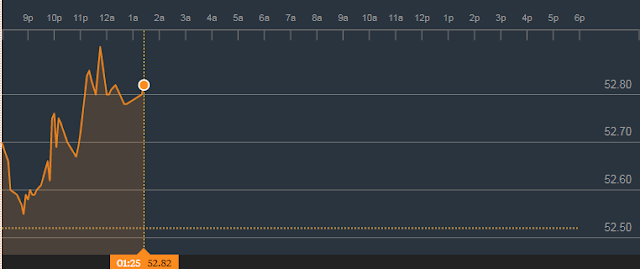Oil prices hit a two-month high on Monday, lifted by a tightening U.S. crude market and the threat of sanctions against OPEC-member Venezuela.
Brent crude futures were at $52.82 per barrel at 0443 GMT on Monday, up 30 cents or 0.6 percent. Prices hit $52.90 per barrel earlier in the day, their highest since May 25.
U.S. West Texas Intermediate (WTI) futures were up 16 cents, or 0.3 percent, at $49.87 per barrel, and the entire WTI curve is close to moving back over $50 per barrel, with only September and October a notch below that level.
The price rises put both crude benchmarks on track for a sixth consecutive session of gains.
Prices have risen around 10 percent since the last meeting of leading members by the Organization of the Petroleum Exporting Countries (OPEC) and other major producers, including Russia, when the group discussed potential measures to further tighten oil markets.
"U.S. inventories are showing massive drawdowns, Saudi Arabia seems intent on playing its role as the world's swing producer (and) impending sanctions on Venezuela by the U.S. will almost certainly be oil price-supportive," said Jeffrey Halley, analyst at futures brokerage OANDA.
The United States is considering imposing sanctions on Venezuela's vital oil sector in response to Sunday's election of a constitutional super-body that Washington has denounced as a "sham" vote.
But traders said the biggest price supporter was currently a tightening U.S. oil market.
"Strong increases in the price of oil ... (were) fueled in large part by the substantial drawdowns in U.S. inventories over the past several weeks," said William O'Loughlin, analyst at Rivkin Securities.
"A continuation of this trend could indicate the oil market is rebalancing thanks to the production cuts by OPEC and Russia," he added.
After rising by more than 10 percent since mid-2016, U.S. oil production dipped by 0.2 percent to 9.41 million barrels per day (bpd) in the week to July 21.
U.S. crude inventories have fallen by 10 percent from their March peaks to 483.4 million barrels.
Drilling for new U.S. production is also slowing, with just 10 rigs added in July, the fewest since May 2016.
The tighter market was also visible in the price curve, which shows backwardation in the front end.
Backwardation is a market condition in which prices for immediate delivery of a product are higher than those later on.
Brent prices for delivery in September are currently around 35 cents above those for October.
To know our latest Recommendation or Crude Oil signals along with stop loss and target price visit :-


No comments:
Post a Comment